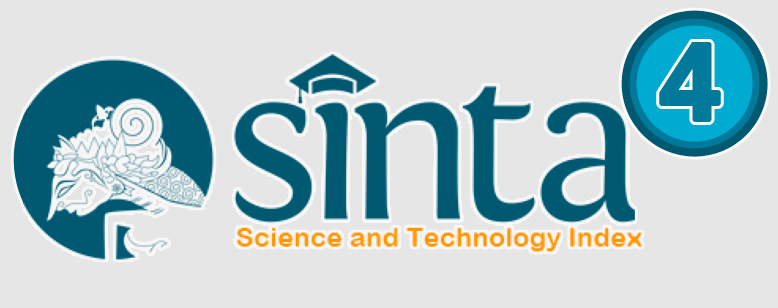CHARACTERISTICS OF CONTINUITY TYPE SUPPORTED BY JENTIK Aedes aegypti IN REGIONAL WORKING PUSKESMAS BULILI
Abstract
Dengue Hemorrhagic Fever (DHF) is a severe and potentially lethal dengue virus infection. DHF control measures can be performed on adult mosquitoes or in larvae. Controlling the larval stage can be done by cutting the chain of transmission of dengue disease through containers that made Aedes aegypti mosquitoes laying and breeding. This study aims to determine the preferred container characteristics of larva Aedes aegypti in the work area of Puskesmas Bulili, South Palu District. This research will be carried out in the work area of Puskes Puskesmas Public Health Center by using spot survey method by observing all containers potentially become Aedes aegypti larvae breeding place in research location. The variables under study will be presented in descriptive form by describing the environmental characteristics of containers preferred by Aedes aegypti mosquito larvae ranging from type, base material and container location. The results showed that the type of container favored by Aedes aegypti mosquitoes is the type of bathtub with a base material made of plastic and the location of the container inside the community house.
Keywords : DHF, Container, Aedes aegypti
References
Anggraeni, D.S. 2011. Stop Demam Berdarah Dengue. Bogor: Bogor Publishing
Departemen Kesehatan Republik Indonesia. 2005. Pencegahan dan Pemberantasan Demam Berdarah Dengue di Indonesia. Jakarta: Dirjen PP& PL.
Dinas Kesehatan Provinsi Sulawesi Tengah. 2014. Data Kasus Demam Berdarah di Sulawesi Tengah. Dinas Kesehatan Provinsi Sulawasi Tengah, Palu
Dinas Kesehatan Kota Palu. (2015). Kasus Demam Berdarah Dengue (DBD) per Bulan Berdasarkan Kelurahan di Kota Palu. Palu: P2 DBD Dinas Kesehatan Kota Palu.
Dinas Kesehatan Provinsi Sulawesi Tengah. (2014). Data Kasus Demam Berdarah di Sulawesi Tengah. Palu: Dinas Kesehatan Provinsi Sulawesi Tengah.
Ginanjar, G. 2004. Demam Berdarah. PT Mizan Publika. Yogyakarta.
Hadi, U. K., Soviana, S., & Gunandini, D. D. 2012. Aktivitas Nokturnal Vektor Demam Berdarah Dengue Di Beberapa Daerah Di Indonesia. Jurnal Entomologi Indonesia, 9(1), 1.
Heni Prasetyowati, R. M., Dewi Nur Hodijah, Mutiara Widawati, Tri Wahono. 2014. Survey Jentik Dan Aktifitas Nokturnal Aedes SPP. Di Pasar Wisata Pangandaran. Jurnal Ekologi Kesehatan, 13(1), 33-42.
Kartika, F. D., & Isti’anah, S. (2015). EFEK LARVISIDA EKSTRAK ETANOL DAUN KEMANGI (Ocimum sanctum Linn) TERHADAP LARVA INSTAR III Aedes aegypti. JKKI: Jurnal Kedokteran dan Kesehatan Indonesia, 6(1), 38-46.
Karyanti, M. R., & Hadinegoro, S. R. (2016). Perubahan Epidemiologi Demam Berdarah Dengue di Indonesia. Sari Pediatri, 10(6), 424-432.
Karyanti, M. R., & Hadinegoro, S. R. 2009. Perubahan Epidemiologi Demam Berdarah Dengue Di Indonesia. Sari Pediatri, 10(6), 424-432.
Kesehatan, K. (2015). Data dan Informasi Tahun 2014: Profi l Kesehatan Indonesia: Jakarta.
Kementrian Kesehatan Republik Indonesia. 2015. Data dan Informasi Tahun 2014 (Profil Kesehatan Indonesia). Kementerian Kesehatan Republik Indonesia, Jakarta.
Made Sudarmaja, S. J. M. 2009. Pemilihan Tempat Bertelur Nyamuk Aedes aegypti pada Air Limbah Rumah Tangga di Laboratorium. Jurnal Veteriner, 10(4), 205-207.
Sembel D. 2009. Entomologi Kedokteran. Penerbit Andi. Yogyakarta
Suhendro, N L., Chen K., dan Pohan, H.T., 2006. Demam Berdarah Dengue. Dalam: Buku Ajar Ilmu Penyakit Dalam Jilid III Edisi IV, Departemen Ilmu Penyakit Dalam FKUI, Jakarta: 1731-1732.
Syukur, A. (2012). Analisis spasial faktor risiko lingkungan terhadap kejadian Demam Berdarah Dengue (DBD) di Kabupaten Sambas Provinsi Kalimantan Barat. Program Pascasarjana Undip.
Zulkoni, A. (2011). Parasitologi. Yogyakarta: Nuha Medika.
Authors who publish with this journal agree to the following terms:
- Authors retain copyright and grant the journal right of first publication with the work simultaneously licensed under a Creative Commons Attribution-Non Commercial License that allows others to share the work with an acknowledgment of the work's authorship and initial publication in this journal.
- Authors are able to enter into separate, additional contractual arrangements for the non-exclusive distribution of the journal's published version of the work (e.g., post it to an institutional repository or publish it in a book), with an acknowledgment of its initial publication in this journal.
- Authors are permitted and encouraged to post their work online (e.g., in institutional repositories or on their website) prior to and during the submission process, as it can lead to productive exchanges, as well as earlier and greater citation of published work.
The content of this website is licensed under a Creative Commons Attribution-ShareAlike 4.0 International (CC BY-SA 4.0) license. 












